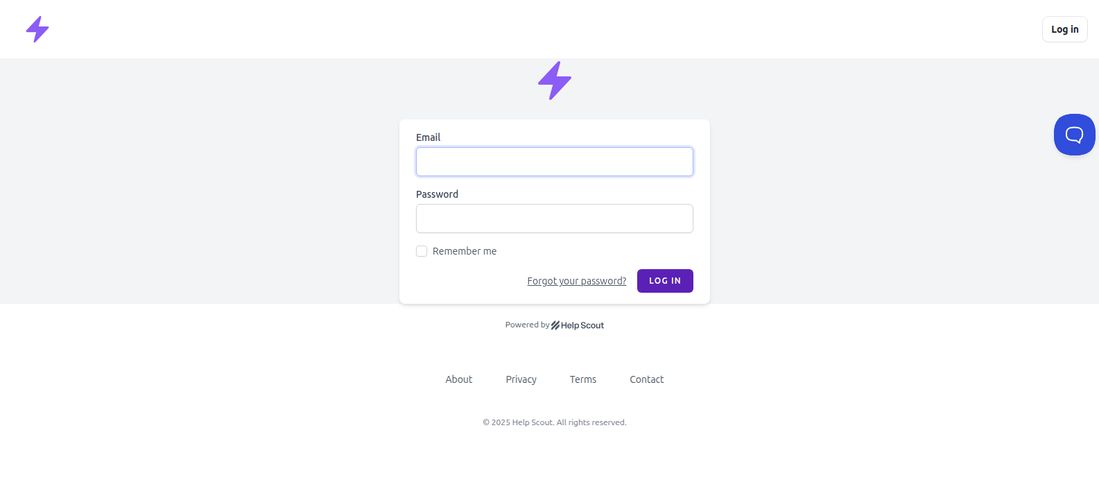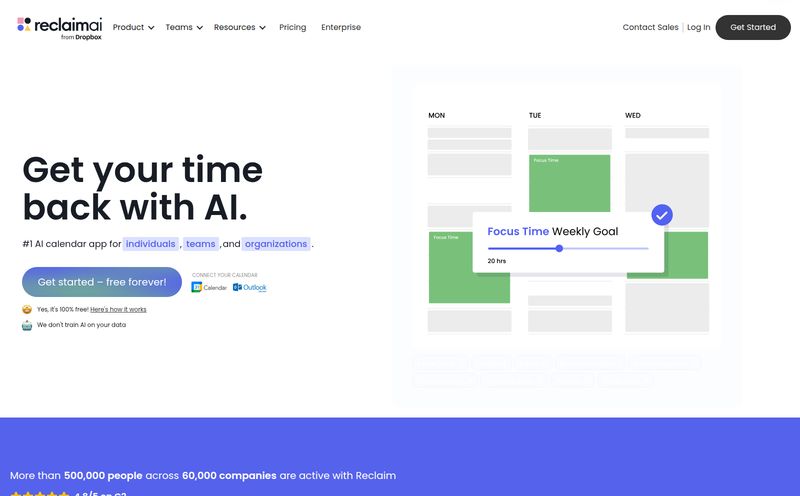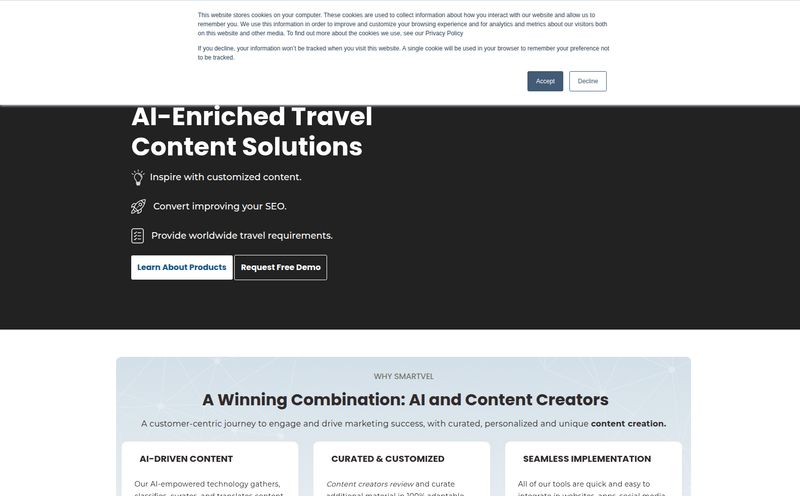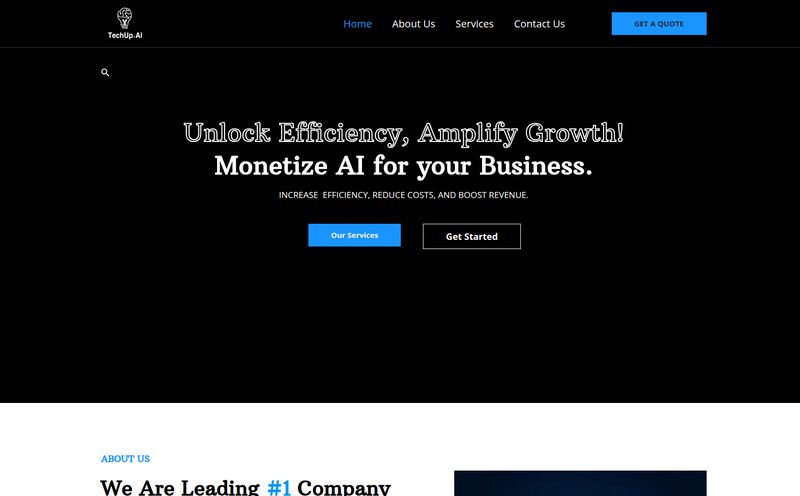If you’re in the SaaS world, you know the feeling. You spend months, maybe years, building a beautiful product. You pour your heart, soul, and a frankly terrifying amount of caffeine into it. You launch. People sign up. And then… crickets. Churn. Users log in once, get confused, and vanish forever. It’s a gut-punch that every product manager and founder has felt.
This is where the whole idea of Product-Led Growth, or PLG, comes into play. It’s the philosophy that the product itself should be the primary driver of customer acquisition, conversion, and expansion. But a product can't just be great; it has to feel great. It needs to guide users, show them value, and help them succeed. Effortlessly.
Enter tools like Userpilot. I’ve seen its name pop up more and more in growth marketing circles, promising to be the all-in-one solution for this exact problem. But as we know, in the world of martech, promises are cheap. So, I decided to take a good, hard look. Is Userpilot the real deal, or just another expensive line item on your subscription list? Let's get into it.
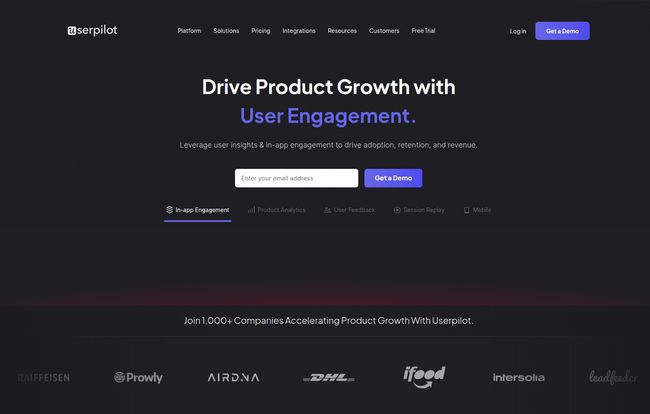
Visit Userpilot
What Exactly is Userpilot Anyway?
First off, let’s clear something up. Userpilot isn’t just another one of those simple “tour-builder” widgets. I’ve seen plenty of those, and they often create more problems than they solve. Userpilot bills itself as a complete product growth platform. Think of it less like a pop-up and more like a friendly, intelligent guide living inside your application.
Its main job is to help you deliver personalized in-app experiences to your users at every single stage of their journey. From the very first moment they log in (onboarding) to celebrating their 100th successful task (engagement) and asking for their opinion (feedback). The whole goal is to help users reach that “aha!” moment as quickly as possible and then keep finding new ones. This is how you drive adoption, boost retention, and ultimately, grow revenue. It’s the core loop of any healthy SaaS business.
The Core Features That Actually Matter
A platform is only as good as its tools. Userpilot is packed with features, but I want to focus on the ones that I think move the needle for most product teams. These are the workhorses of the platform.
Seamless User Onboarding (Without Annoying Your Dev Team)
This is the big one. Your user’s first five minutes are critical. If they’re lost, they’re gone. Userpilot's superpower here is its no-code editor. And we all know how much developers love getting pulled off a sprint to code a simple tooltip. (Spoiler: they don’t.)
With Userpilot, your product or marketing team can build interactive walkthroughs, welcome screens, and checklists directly on top of your app. You can segment users based on their behavior or persona and show them a flow that’s relevant to them, not a generic tour that bores everyone. The case study they mention with Kontentino seeing a 10% improvement in user activation is a testament to this. That’s not just a vanity metric; that's real, tangible growth.
Understanding Your Users with Analytics and Session Replay
Creating onboarding flows is great, but if you're flying blind, you’re just guessing. Userpilot includes a pretty solid Product Analytics suite. You can see how users are interacting with features, track progress through your funnels, and identify where people are getting stuck. It's about turning raw data into actionable insights.
And for a deeper dive, there's Session Replay. This is like having a DVR for your user sessions. You can literally watch a recording of a user’s mouse movements, clicks, and scrolls. It’s one of the best ways to build empathy and understand user frustration. It's worth noting, though, that this is an add-on for the Growth plan, not a built-in feature from the start.
Closing the Loop with In-App User Feedback
Stop sending those “can we have two minutes of your time?” emails that everyone ignores. Userpilot lets you gather feedback while the user is actually in the product. This context is everything. You can trigger micro-surveys or Net Promoter Score (NPS) polls based on specific actions. For example, right after a user successfully uses a new feature for the first time, you can ask them what they thought. The response rates and quality of feedback are just on another level compared to email.
Taking It on the Road with Userpilot for Mobile
In 2024, if you don't have a mobile strategy, you're falling behind. I was happy to see Userpilot offers support for native iOS and Android apps. This means you can create the same kind of guided experiences for your mobile users. Consistency across platforms is huge for user experience. Just like Session Replay, this is an add-on feature, so you’ll need to factor that into your budget if mobile is a big part of your business.
So, How Much Does Userpilot Cost?
Alright, let's talk about the elephant in the room: the price. Userpilot is an investment. It's not designed for a side-hustle or a pre-revenue startup. It's a professional tool for businesses that are serious about growth. Here’s a quick breakdown of their public plans:
| Plan | Price | Key Features |
|---|---|---|
| Starter | $299 / month | Up to 2,000 MAUs, In-App Engagement, User Segmentation, NPS Surveys. Good for getting your feet wet. |
| Growth | $799 / month | Everything in Starter plus Product Analytics, In-App Surveys, Resource Center. Session Replay & Mobile are paid add-ons here. |
| Enterprise | Custom Pricing | Everything in Growth plus premium integrations, security compliance (SOC 2, GDPR), SSO, and priority support. |
My take? The Starter plan feels a little limited without the core analytics. The Growth plan is where the magic really happens, but at $799/mo plus potential add-ons, you need to be sure you're going to use it. You have to do the math: if this tool can reduce your churn by even a small percentage or improve activation like it did for Kontentino, it could easily pay for itself.
The Good, The Bad, and The Honest Truth
No tool is perfect. After digging through its features and pricing, here’s my honest breakdown.
On the plus side, the comprehensive nature of the platform is a huge win. Having onboarding, analytics, and feedback all in one place prevents the data silos and tool-fatigue that so many teams suffer from. The no-code editor is genuinely empowering for non-technical team members. It democratizes product improvement.
However, the pricing is a real consideration. This is not a casual purchase. The fact that key features like Session Replay and Mobile support are add-ons even on the Growth plan might rub some people the wrong way. It feels a bit like buying a car and then having to pay extra for the wheels. And like any powerful platform, there’s likely a bit of a learning curve to truly master all its capabilities and integrations. Don’t expect to be a pro in one afternoon.
Who is Userpilot Really For?
In my experience, Userpilot is tailor-made for a specific type of company. If you're a mid-market or enterprise SaaS business that has bought into the Product-Led Growth model, this tool is squarely in your wheelhouse. It's for established product teams who have a budget and a mandate to improve user metrics. They understand the cost of churn and the value of retention.
Who isn't it for? If you're an early-stage startup running on a shoestring budget, the price tag might be too steep. If your product is very simple and doesn't require much guidance, it's probably overkill. You have to have a certain level of product complexity and user volume to really get the full value from a platform like this.
Frequently Asked Questions about Userpilot
What is Userpilot primarily used for?
It's a product growth platform used to create in-app experiences. This includes user onboarding flows, checklists, tooltips, product analytics, and collecting user feedback through surveys like NPS.
Is Userpilot difficult to set up?
Getting the basic script installed is straightforward for a developer. The real work is in designing and building the flows. Thanks to its no-code editor, this part doesn't require engineering resources, but it does require a good understanding of your users and your product.
How does Userpilot compare to competitors like Appcues or Pendo?
This is a classic question. Pendo is often seen as more analytics-heavy and enterprise-focused. Appcues has a strong reputation for its easy-to-use flow builder. Userpilot strikes a balance, offering a robust set of tools that cover both engagement and analytics, with a strong focus on segmentation and personalization for PLG-focused companies.
Can I use Userpilot on my mobile app?
Yes, you can. Userpilot offers support for native iOS and Android applications, but it is a paid add-on feature, so make sure it's included in the plan or quote you get.
Is Userpilot worth the price?
It depends entirely on your business. If you have a significant number of users and a clear problem with activation, retention, or feature adoption, the ROI can be massive. If a 10% improvement in activation would mean thousands in new revenue, then yes, its probably worth it.
Final Thoughts: A Worthy Co-Pilot for Your Product?
So, where do we land on Userpilot? I'm genuinely impressed. It’s a powerful, well-thought-out platform that directly addresses the core challenges of Product-Led Growth. It’s not just about adding some pretty pop-ups; it's about fundamentally understanding and improving the user experience from the inside out.
Yes, it's an investment. But so is product development. So is marketing. In today's competitive SaaS market, the user experience is your marketing. A tool that gives you direct control over that experience isn't just a nice-to-have; it's a strategic asset. If you have the scale and the ambition, Userpilot looks like a very capable co-pilot for your growth journey.
